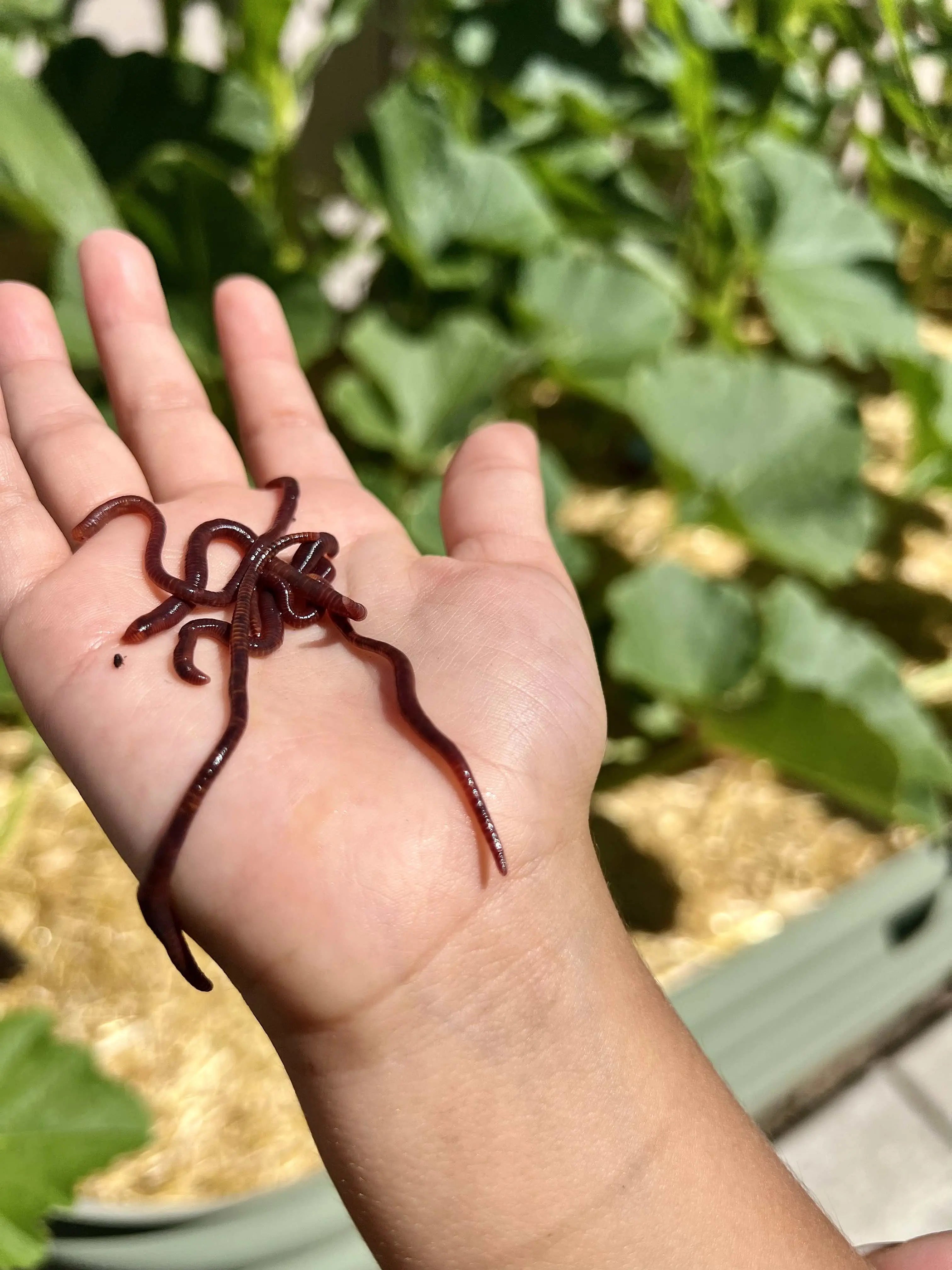Lake Hickory Bait Provides the Solutions You Need for a Perfect Lawn
Lake Hickory Bait Provides the Solutions You Need for a Perfect Lawn
Blog Article
Open the Keys of Red Wigglers: Your Guide to Composting Success
The integration of red wigglers into composting practices presents a significant opportunity for enhancing dirt health and advertising sustainability. These microorganisms are not just reliable recyclers of natural waste; they use a myriad of advantages that can transform yard management. Recognizing their demands and actions is critical for maximizing their possibility, from establishing up a suitable worm bin to feeding them the right products. As we discover the necessary elements of successful vermicomposting, one might question exactly how these small creatures can bring about a much more dynamic and productive yard ecological community.

What Are Red Wigglers?
(Red Wiggler Express)Red wigglers, scientifically recognized as Eisenia fetida, are a types of earthworm primarily made use of in composting because of their impressive capability to decompose raw material efficiently. These worms are defined by their reddish-brown coloration and a fractional body, generally gauging between 3 to 4 inches in size. Unlike various other earthworm types, red wigglers grow in abundant, natural atmospheres, making them perfect for vermicomposting systems.
Belonging To North America, they are usually discovered in decomposing leaves and garden compost piles, where they play a vital role in nutrient recycling. Their adaptation to staying in a moist, cardio environment enables them to eat large quantities of natural waste, damaging it down into nutrient-rich spreadings that enhance soil wellness.
Red wigglers recreate quickly, with a solitary worm capable of creating numerous cocoons each week, each including numerous hatchlings. This rapid reproduction price adds to their effectiveness in composting operations. They choose temperatures between 60 ° F and 80 ° F, and their task degree raises considerably within this variety, additional assisting in the disintegration process. Recognizing the biology and behavior of red wigglers is vital for optimizing their capacity in composting applications.
Benefits of Utilizing Red Wigglers
Utilizing the power of red wigglers in composting provides various advantages that boost dirt wellness and advertise sustainable waste administration. These exceptional microorganisms effectively break down raw material, changing cooking area scraps and yard waste into nutrient-rich vermicompost. This finished product is exceptionally advantageous for plant growth, as it boosts dirt structure, boosts wetness retention, and improves nutrient availability.

(Red Wiggler Express)Additionally, the visibility of red wigglers in your composting system can speed up the composting process, generating top notch compost in a portion of the time compared to traditional techniques. The castings generated by these worms are likewise including valuable bacteria that further improve the soil ecological community.
Establishing Your Worm Container
Producing an effective worm bin is a straightforward procedure that can significantly boost your composting efforts. The very first step is picking an appropriate container. Worm containers can be made from plastic storage containers, wooden boxes, or readily available worm containers. Ensure the container has adequate drain and air flow holes to preserve optimum wetness degrees and airflow.
Next, prepare the bed linens product, which works as the worms' habitat. A mix of shredded paper, cardboard, and coconut coir functions well, offering a comfy setting for the worms. Objective for a bed linen deepness of concerning 4-6 inches. Dampen the bedding lightly, ensuring it looks like a damp sponge without excess water pooling near the bottom.

Feeding Your Red Wigglers
To guarantee the health and performance of your red wigglers, it is important Bonuses to offer them with a balanced diet that fulfills their nutritional needs. Red wigglers prosper on a varied range of natural materials, which not just provide necessary nutrients yet likewise advertise effective composting.
Start by integrating kitchen scraps such as veggie peels, fruit cores, and coffee grounds. Stay clear of citrus fruits, onions, and garlic, as these can be harmful to worm health and wellness. Additionally, present shredded paper, cardboard, and completely dry leaves to develop a well-aerated atmosphere.
Feeding regularity should be checked; typically, worms can eat half their body weight in food weekly. It is critical to stay clear of overfeeding, as excess food can bring about unpleasant odors and draw in parasites. A good technique is to add food in percentages, allowing worms to refine it prior to introducing a lot more.
Maintaining wetness degrees is additionally important; the bed linen needs to be damp however not soaked. Be sure to consistently check the temperature and pH levels of the container to make sure an optimal environment for your red wigglers, eventually improving their composting performance.
Harvesting and Making Use Of Garden Compost
A successful composting procedure with red wigglers culminates in the rich, dark compost called vermicompost, which can significantly enhance dirt health and wellness and plant growth. Harvesting this nutrient-dense material typically takes place every 3 to 6 months, relying on the size of your system and the amount of natural issue being processed.
To harvest, delicately separate the compost from the worms and any kind of undecomposed products. One reliable technique involves relocating the components of the bin away and adding fresh bedding and food to the vacant area, encouraging the worms to move. After a few days, the compost can be accumulated from the opposite side.
It is vital to make use of vermicompost properly to optimize its benefits. By integrating vermicompost into your gardening program, you not just reuse organic waste however additionally create a successful ecosystem that supports lasting horticulture practices.
Conclusion
In recap, red wigglers offer as remarkable allies in composting efforts, transforming organic waste into nutrient-rich vermicompost. By recognizing the optimum problems for their environment, feeding demands, and compost harvesting methods, gardeners can enhance soil health and advertise plant vigor.
Report this page